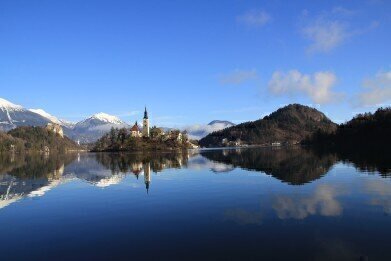Water/Wastewater
How Clean Are Europe's Lakes and Rivers?
Jan 04 2019
The latest report from the European Environmental Agency (EEA) has painted a damning picture of the state of rivers and lakes in the EU. After checking the water quality at over 130,000 sites throughout the continent, the EEA concluded that less than 40% of the bodies of water tested met the minimum standards with regards to pollution and habitat destruction.
The report, entitled State of Our Waters, pinpointed English rivers and lakes as being among the worst offenders when it comes to allowing pollution to infiltrate them. By contrast, Scotland’s waterways fared far better in the testing, with water quality comparable to that found in much of Scandinavia, though even there only 55% of tested sites were given official approval.
Alarming results
Compiling comparative results between different nations in Europe was not an easy process, since each country relies on different analytical instrumentation and specialty gases to collect its data. However, English rivers and lakes were unequivocally among the poorest performers in terms of cleanliness to be found in Europe. Indeed, they were found to be in an even worse condition than the last time such a report was conducted in 2010, suggesting severe policy problems in the intervening years.
On the whole, 62% of surface water sites (i.e. rivers, streams, lakes and estuaries) were found to display levels of contamination below the acceptable threshold. Groundwater samples fared better, with 75% of all samples surpassing minimum standards. Given that all waterways in the EU were intended to have met the limits by 2015, however, the news must be received as a failure and a wake-up call to act now or suffer now the consequences going forwards.
Myriad causes
The biggest source of contamination in the collected samples was believed to be caused by mercury accumulation, brought about by improper wastewater treatment methods and agricultural run-off carrying pesticide residue. It’s thought that increased populations and more widespread industry are responsible for the decrease in quality over the last eight years, while improved methods of high-quality monitoring have also cast the problem into sharper focus.
However, the authors of the report insisted that such reasons were no excuse for the poor performance of waterways all across the bloc, given that the legislation has been in place for several years now. Instead of a lack of regulation, it’s an absence of impetus on the part of individual governments which is to blame for the poor results. “This report shows that we are nowhere [near] halting biodiversity loss by 2020,” explained Andreas Baumueller, chief of natural resources for WWF Europe. “It is just another symptom that we will miss the targets set by heads of states. The legislation is there in the form of the EU’s Water Framework Directive, but the political will is clearly lacking to make it work on the ground.”
Digital Edition
IET 34.2 March 2024
April 2024
Gas Detection - Biogas batch fermentation system for laboratory use with automatic gas analysis in real time Water/Wastewater - Upcycling sensors for sustainable nature management - Prist...
View all digital editions
Events
Apr 24 2024 Jakarta, Indonesia
Apr 24 2024 Sao Paulo, Brasil
Apr 30 2024 Melbourne, Australia
Apr 30 2024 Birmingham, UK
May 03 2024 Seoul, South Korea


















